Understanding Part P of the Building Regulations
- 15th April 2023

Understanding Part P of the Building Regulations for Electrical Work in the UK
If you’re a homeowner or a tradesman working on electrical installations in the UK, it’s important to understand the regulations that govern electrical work. Specifically, Part P of the government’s Building Regulations legislation pertains to electrical work carried out in domestic dwellings. In this blog post, we’ll explain what Part P is, why it’s important, and how it relates to industry-recognized health and safety responsibilities.
What is Part P?
Part P is a section of the Building Regulations legislation that specifically refers to electrical work carried out in England and Wales. This legislation outlines the tasks that electrical workers must comply with when delivering work within domestic dwellings. The regulations are aligned with BS7671 standards, which are recognized by the electrotechnical community as the benchmark for electrical installations in the UK.
Why is Part P important?
Part P is important because it requires electricians and domestic installers to deliver work with sensitivity to the potential risks that their work poses to building occupants. This focus is on reducing the likelihood of injury caused by fire or electric shock. By understanding the critical importance of these actions, electrical professionals can take all available steps to mitigate against hazard occurrence. Compliance with Part P ensures that electrical installations are safe, reliable, and in line with industry-recognized health and safety responsibilities.
How does Part P relate to industry-recognized health and safety responsibilities?
Part P is closely aligned with industry-recognized health and safety responsibilities. It requires electricians and domestic installers to comply with guidance articulated within the regulations, which are based on BS7671 standards. These standards are documented in the IET’s Requirements for Electrical Installations manual, also known as ‘the wiring regulations’. This manual determines how tradesmen should approach each stage of the electrical installation process, ensuring that industry-recognized health and safety responsibilities are met.
Transferrable Documents
While Part P only applies to electrical craftwork taking place in England and Wales, it’s worth noting that having a robust knowledge of the guidance notes can help you understand expectations in any UK country. The regulations are transferrable documents, and there is a substantial volume of crossover between each of the respective Building Regulations. BS7671 standards, in particular, apply to the whole of the United Kingdom, and are recognized by the electrotechnical community as the benchmark for electrical installations.
Compliance with Part P of the Building Regulations legislation is essential for anyone working on electrical installations in domestic dwellings in England and Wales. It ensures that industry-recognized health and safety responsibilities are met, and that installations are safe and reliable. By understanding the regulations and their alignment with BS7671 standards, electricians and domestic installers can deliver work with sensitivity to the potential risks that their work poses to building occupants.
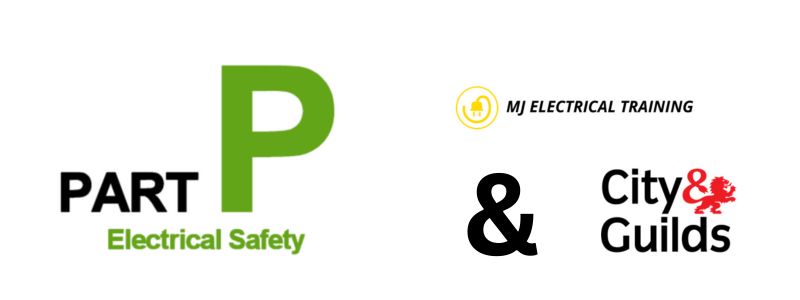
Understanding Part P Guidance: What You Need to Know
If you’re an electrician or a domestic installer, it’s important to have a solid understanding of Part P guidance. This legislation was introduced in 2005 to increase accountability for electrical workers when carrying out work in domestic environments. It applies to both the quality of craftsmanship and the protection and welfare of the dwelling’s occupants.
Who Does Part P Guidance Apply to?
Part P guidance applies to both electricians and domestic installers. While domestic installers do not carry the same status as electricians, they are still empowered to deliver a wide range of electrical work in domestic settings. As a result, having a solid awareness of Part P methods of control is highly favourable for anyone conducting electrical tasks in dwellings.
Building Regulations for New and Existing Properties
The Building Regulations distinguish between addressing installations in a new home versus tasks executed in pre-existing domestic dwellings. For new buildings, the regulations dictate that the completed work must comply with the guidance in operation at that precise moment. However, when working in an established premise, electrical craft activity only needs to align with the prevailing regulations which were in place during the project’s planning phase.
Improving Electrical Systems and Configurations
Regardless of the type of property, the legislation determines that any adjustments or additions to a current property must represent an improvement to the performance of the dwelling’s electrical systems or configuration. This ensures protection for customers and holds electrical workers accountable for the quality of their work.
Why Part P Guidance Matters
Part P guidance is essential for ensuring the safety and well-being of those living in domestic properties. It provides a set of standards that electricians and domestic installers must adhere to, and ensures that electrical work is carried out in a way that promotes safety and efficiency.
So, whether you’re an electrician or a domestic installer, having a solid understanding of Part P guidance is essential for carrying out electrical work in domestic environments. By adhering to these standards, you can ensure that your work is of high quality and that the dwellings you work in are safe and efficient.
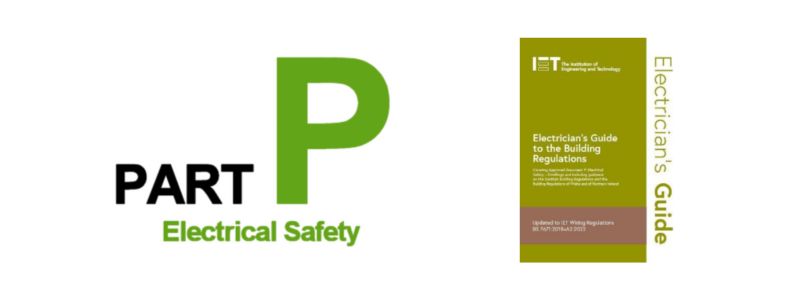
Understanding Local Building Authority Control (LABC) and Part P of Building Regulations
The safety of electrical works in any building is crucial, and this is why the government has put in place regulations to ensure that electrical installations are carried out correctly. Part P of the Building Regulations is a set of rules that require certain electrical works to be notified to the Local Building Authority Control (LABC) or an Approved Building Inspector’s Control (AIBC) firm.
What is LABC?
LABC is an arm of the council that regulates an electrical worker’s approach during relevant electrical work. They are responsible for ensuring that electrical installations are safe and meet the required standards. It is important to note that not all electrical works conducted in domestic dwellings need to be declared to the LABC. There are two categories of electrical works, ‘notifiable’ and ‘non-notifiable’ works. Notifiable works require LABC involvement, while non-notifiable works do not.
Notifiable vs. Non-notifiable Works
The electrical industry presides over what is called ‘notifiable’ and ‘non-notifiable’ works. Notifiable works are those that require notification to the LABC or AIBC. Examples of notifiable works include:
- The installation of a new circuit or consumer unit
- Any work in a bathroom or shower room
- Any work in a swimming pool or sauna
- Any work outside the dwelling, including in outbuildings, gardens or detached garages
Non-notifiable works, on the other hand, do not require notification to the LABC or AIBC. Examples of non-notifiable works include:
- Replacing accessories such as sockets or switches
- Replacing light fittings (as long as no new wiring is required)
- Adding lighting points (as long as no new wiring is required)
- Repairing existing circuits
It is important to note that even non-notifiable works must still be carried out by a competent electrician, and the works must comply with the relevant regulations.
Approved Building Inspector’s Control (AIBC) Firms
Occasionally, installers may opt to liaise with an Approved Building Inspector’s Control (AIBC) firm instead of LABC. These organizations serve the same function as LABC, but they operate in the private sector, not the public sector. Individuals should expect to pay a little more for their services.
Part P of the Building Regulations is an essential regulation that helps to ensure that electrical installations in domestic dwellings are safe and meet the required standards. Not all electrical works need to be notified to the LABC or AIBC, only notifiable works. As a homeowner, it is essential to understand the difference between notifiable and non-notifiable works to ensure that you comply with the relevant regulations. Remember to always use a competent electrician for any electrical work and ensure that the works meet the required standards.

Understanding Part P Scheme Membership for Electricians and Domestic Installers
Are you a domestic installer or electrician looking to interact with Local Authority Building Control (LABC)? If so, you need to be aware that the extent of interaction depends on your profile. However, becoming a member of an official Part P scheme can significantly reduce the level of compulsory communication required.
What are Part P schemes?
Part P schemes are licensing programs designed for domestic electricians in England and Wales. The schemes aim to improve electrical safety in homes by ensuring that electricians are competent and qualified to carry out electrical work.
Who provides Part P schemes?
There are two main government-approved Part P schemes in the UK NICEIC and NAPIT.
Why become a member of a Part P scheme?
By becoming a member of a Part P scheme, electricians and domestic installers can reduce the level of compulsory communication required with LABC. This is because Part P schemes ensure that members are competent and qualified to carry out electrical work, which means that LABC can trust their work and require less interaction.
How to become a member of a Part P scheme?
To become a member of a Part P scheme, you need to apply to one of the providers, such as the NICEIC or NAPIT. The application process typically involves demonstrating your competence and qualifications to carry out electrical work in domestic premises.
If you’re a domestic installer or electrician looking to interact with LABC, becoming a member of a Part P scheme can significantly reduce the level of compulsory communication required. By applying to one of the providers, such as the NICEIC or NAPIT, you can demonstrate your competence and qualifications to carry out electrical work in domestic premises and improve electrical safety in homes.
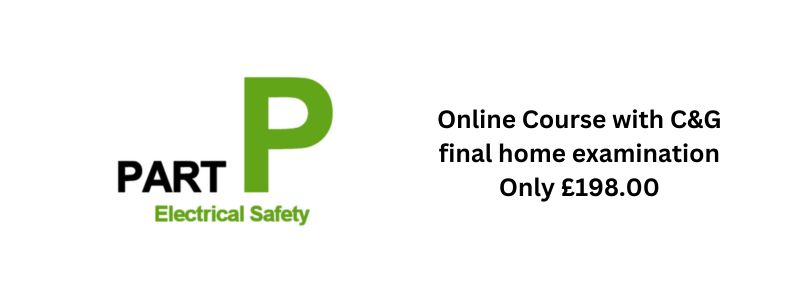
Understanding Notifiable and Non-Notifiable Electrical Work
If you are planning to undertake some electrical work in your home? Do you know the difference between notifiable and non-notifiable work? If you’re not sure, don’t worry. In this blog post, we will give you a comprehensive guide to understanding these two types of work.
What is Notifiable Electrical Work? Notifiable electrical work is any work that requires notification to the local building control department. This includes the following:
- Any new installation or circuit work
- Replacement of a consumer unit
- A complete domestic re-wire
- Activity conducted in ‘Special Locations’ such as bathrooms or wet rooms
It’s important to note that special locations are listed in the BS7671 wiring regulations, and alludes to activity in either uncommon environments, or areas where unique precautions should be undertaken. Within a domestic dwelling, this most commonly refers to work conducted within bathrooms or wet rooms.
What is Non-Notifiable Electrical Work? Non-notifiable electrical work is any work that doesn’t require notification to the local building control department. This includes the following:
- Adding additional socket outlets to a pre-existing circuit in any room (except in areas determined to be a ‘Special Location’)
- Adding additional lighting fixtures to a pre-existing circuit in any room (except in areas determined to be a ‘Special Location’)
- Installing an external light by integrating it into a current lighting system
- Installing additional sockets or light fittings into any room by tapping into a current electrical configuration
It’s important to note that if you’re unsure whether the work you’re planning is notifiable or non-notifiable, it’s best to seek advice from a qualified electrician. They will be able to advise you on the type of work you’re planning and whether it requires notification to the local building control department.
It is important to understand the difference between notifiable and non-notifiable electrical work before undertaking any work in your home. If you’re unsure about the type of work you’re planning, it’s always best to seek advice from a qualified electrician.
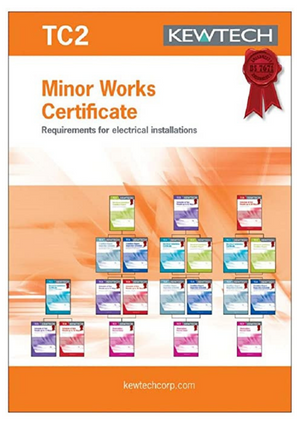
Why Minor Works Certificates are Important for Electrical Installations
When it comes to electrical installations, safety is of paramount importance. Any task that involves a new or existing electrical installation should always be followed by the presentation of a suitable certificate, regardless of whether the works are notifiable or non-notifiable. This is to ensure that the task has been safely completed in compliance with BS7671 standards. In this article, we will discuss the importance of Minor Works Certificates and when they are required.
What is a Minor Works Certificate?
A Minor Works Certificate is a document that should be produced when tasks are limited in scope and do not involve the implementation of a new circuit or installation. It is a relatively short piece of documentation that contains basic, high-level information such as a description of the activity undertaken, the person delivering the task, client detail, and a record of measurements noted during inspection and testing procedures.
When is a Minor Works Certificate Required?
A Minor Works Certificate is required in instances where tasks are limited in scope. Some examples of where a Minor Works Certificate would be appropriate are:
- Fixing a broken light fitting
- Replacing a shower unit of exactly the same specification
- Electric cooker installation, providing the new appliance does not require an adjustment to the existing circuit in place
- Socket extension in any room across the home
- Adding additional light fittings to an existing lighting system
- Removing a redundant ‘spur’ to a central heating boiler
It should be noted that this isn’t an exhaustive list, but it offers a reasonable insight into the types of activity which correspond to Minor Works certification.
Who Can Deliver Minor Works Certification?
It is important to note that Minor Works Certification should only be delivered by a competent person who can demonstrate this academically and practically. This ensures that the individual conducting the task is qualified and experienced enough to do so safely and in compliance with industry standards.
A Minor Works Certificate is an important document that should be produced when tasks are limited in scope and do not involve the implementation of a new circuit or installation. It provides high-level information about the task and ensures that it has been completed safely and in compliance with industry standards. If you require any electrical installations or repairs, it is important to ensure that the person delivering the task is qualified and experienced enough to do so safely.
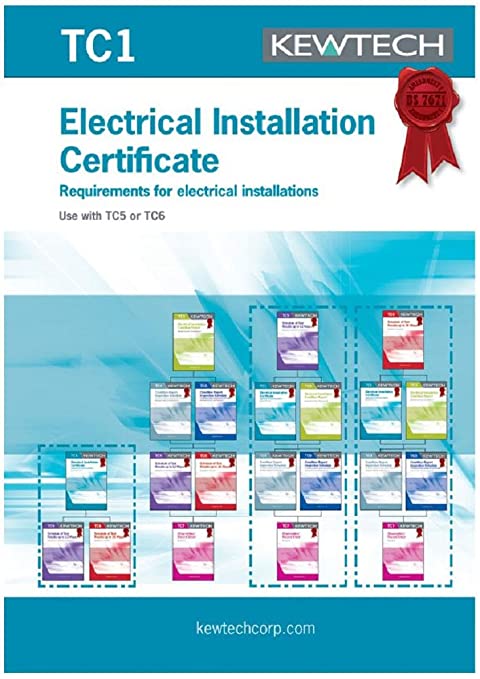
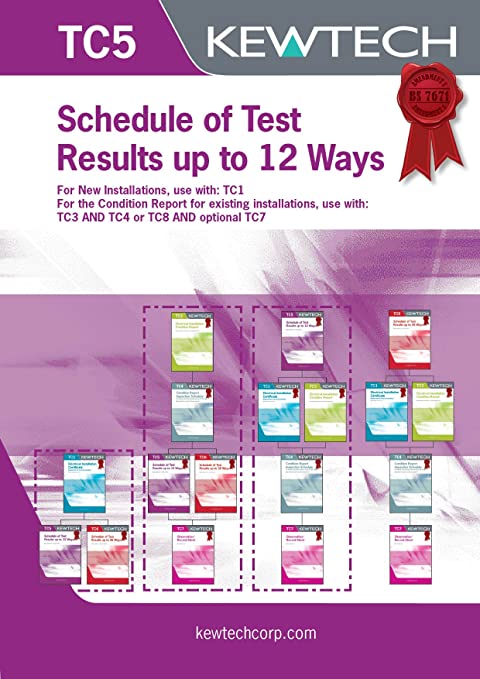
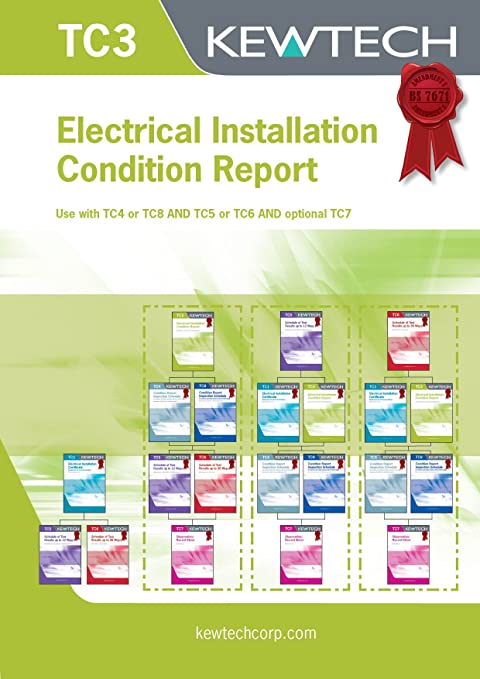
Understanding Electrical Installation Certificates for Electrical Works
If you are working on electrical installations, it is essential to understand the importance of Electrical Installation Certificates. Unlike Minor Works Certificates, Electrical Installation Certificates are longer and more detailed, containing important information about the task.
Electrical Installation Certificates are necessary for all new electrical installations, including upgrading circuit breakers and cabling, and full domestic re-wires. The certificate provides two pages for detailed measurements and commentary on the condition of the circuit or installation. It also includes a further two pages for the inspection schedule, indicating future testing requirements for new installations.
Testing results are provided in a full-page document, demonstrating a more thorough approach than Minor Works verification. The certification process must be finalized before an Electrical Installation Certificate can be issued to the customer.
To help you understand when to utilize Electrical Installation Certificates, consider some examples of when this documentation applies. These include re-wiring a circuit, installing a new lighting system, upgrading an oven’s supply circuit, creating a completely new circuit back to the consumer unit or whole house re-wires.
By understanding Electrical Installation Certificates, you can ensure the safety and compliance of your electrical installations. Contact a certified electrician to learn more about Electrical Installation Certificates and how they apply to your electrical works.
Part P Training: Why You Need a City & Guilds Course
If you’re looking to become a Part P qualified, attending a Part P course with C&G final examination is highly recommended. These courses provide a comprehensive understanding of Part P regulations and relevant topics for prospective installers. City & Guilds approved centres offer well-structured courses that cover the content of the Building Regulations, how Part P is imposed in the electrotechnical industry, and an in-depth review of electrical tasks in a domestic dwelling. The course length is determined by experience level and capability and covers both notifiable and non-notifiable work.
At the end of the course, candidates will be able to take the City & Guilds Part P 2393-10 qualification. As a renowned certification body throughout the electrotechnical sector, City & Guild’s qualifications are widely recognised throughout the electrical industry, making them the most popular choice for both public and private learning institutions.
By taking a recognised Part course and gaining the City & Guilds Part P qualifciation, you will gain the knowledge and skills needed to succeed as a Part P electrician. Don’t settle for less – choose the best course for your future career in this field.

